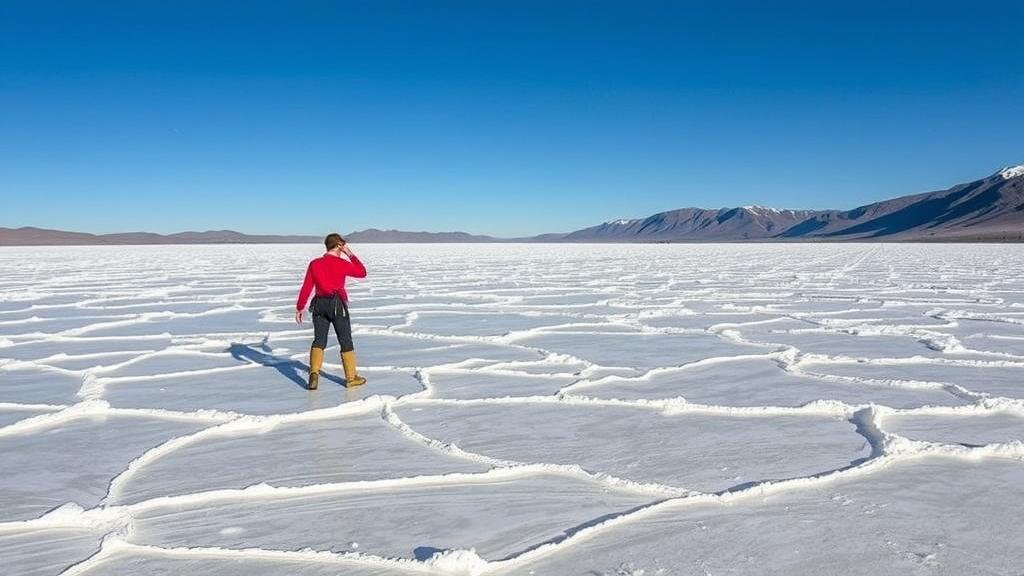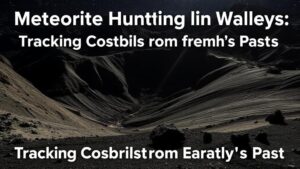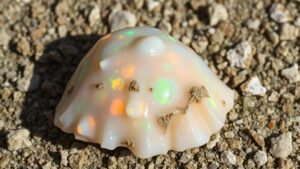Exploring high-altitude salt flats in Bolivia for crystallized halite formations.
Exploring High-Altitude Salt Flats in Bolivia for Crystallized Halite Formations
Bolivias high-altitude salt flats, particularly the renowned Salar de Uyuni, offer a unique and captivating destination for rockhounds and mineral collectors. These expanses of shimmering salt crusts not only present stunning landscapes but also serve as prime locations for discovering crystallized halite formations, which are sought after for both their beauty and geological significance.
Understanding Salt Flats and Their Formation
Salt flats, also known as salt pans or salt deserts, are expansive land areas covered by a layer of salt deposits. These areas typically form in regions of high evaporation rates and low rainfall, where water from lakes or rivers evaporates, leaving behind salt crystals. Bolivias Salar de Uyuni, the largest salt flat in the world at approximately 10,582 square kilometers (4,086 square miles), is a prime example of this geological phenomenon.
One of the most important minerals found in these salt flats is halite, the natural form of sodium chloride. These formations provide valuable insight into the processes of evaporation and sedimentation that shape our planets environment.
Crystallized Halite: A Collectors Dream
Crystallized halite formations are characterized by their distinct cubic crystals, which can vary in color from clear to shades of pink, blue, and purple, depending on impurities within the salt. The formation of these crystals occurs through a process called evaporation crystallization, where dissolved minerals in brine solution precipitate out as the water evaporates.
- Crystals typically measure between 0.5 cm to 1 cm in size, but larger specimens have been found.
- The presence of other minerals, such as gypsum or boron compounds, can create striking color variations.
Visiting Salar de Uyuni: Practical Tips for Collectors
For rockhounds interested in exploring Bolivias salt flats, proper preparation and knowledge about the environment are vital. Here are some practical tips for mineral collectors:
- Timing Your Visit: The best time to visit Salar de Uyuni is during the dry season, from April to October, when access is easier and the weather is more stable.
- Equipment: Bring sturdy footwear, sunglasses, sunscreen, and a hat to protect against the intense sun and glare off the salt flats. A good camera and geological tools such as a pick or hammer can also enhance your experience.
- Safety Considerations: Always ensure that you have enough water and provisions, as amenities can be scarce in remote areas. GPS devices are helpful for navigation.
- Respecting the Environment: While collecting specimens is a significant part of the rockhound experience, it is crucial to adhere to local regulations and practice ethical collecting methods, avoiding damage to the fragile ecosystem.
Scientific Insights and Environmental Concerns
The study of halite and other minerals in high-altitude salt flats provides vital information about past climatic conditions, as well as ongoing environmental changes. For example, researchers have reported that Salar de Uyuni contains an estimated 7 million tons of lithium-rich brine, making it a potentially important resource for lithium-ion battery production. But, the extraction of such resources raises environmental concerns, particularly regarding water use in a region already challenged by limited water availability.
Balancing mineral collection with environmental stewardship is essential for the sustainable enjoyment of these unique landscapes. Educating oneself about the scientific significance of halite formations enhances the appreciation of these natural wonders.
Conclusion: The Allure of Bolivias Salt Flats
The high-altitude salt flats of Bolivia, with their striking crystallized halite formations, offer a rich playground for rockhounds and mineral collectors. From understanding the formation processes to equipping oneself for a safe journey, there is much to learn and appreciate in this unique ecosystem. By following ethical practices and being mindful of the delicate environment, collectors can contribute to preserving these breathtaking natural wonders for future generations.
As you plan your expedition, remember that the beauty of these salt flats is not just in the crystals you find but also in the extraordinary landscapes and geological marvels that surround you.



